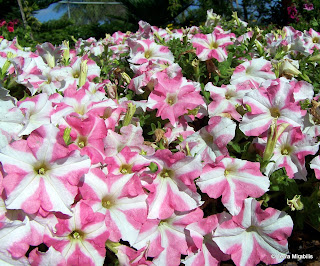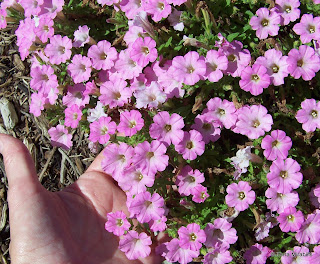Once I finally sort them out, I plan to post pix of plants I came across, wild and cultivated, in bloom. (My sister quipped that I had taken photos of everything in England with a leaf!)
But today I want to post a bee update and write about pollinators -- how important it is to protect and nurture them, perhaps by supporting the Pollinator Partnership.
Those who have read earlier posts will remember that I have four beehives, maintained by a professional beekeeper, in my typical suburban garden. Two are doing extremely well, and two are so-so. According to Steve, the beekeeper, those two hives have poor quality queens. (Who knew that queens came in different qualities?!) Something else I've learned is that beehives produce a perfume, and these days the garden has a wonderful scent of honey.
So, last week, the first of the honey was harvested, an activity that upset the bees rather a lot, and forcing Steve and his brother-in-law helper, to don shirts along with the face veils. I got my first sting since I was a small child when a bee got tangled in my hair. I wasn't particularly close, but I wish I'd worn a hat. Still, I feel I've been initiated!
 The "supers" were laden, each bearing some 60-pounds of honey. We tasted some scrapings from one of the hives; it had a wonderful mild flavor and I'm eagerly anticipating Steve's return with our "rent" of bulk honey.
The "supers" were laden, each bearing some 60-pounds of honey. We tasted some scrapings from one of the hives; it had a wonderful mild flavor and I'm eagerly anticipating Steve's return with our "rent" of bulk honey. |
| Add caption |
--o0o--
| From: Queen of the Sun |
Trucking hives from the Eastern US (and flying them in from Australia because so many American colonies have died from colony collapse disorder), for a three-week pollination frenzy at Paramount Farms' massive almond groves, is, on so many levels, a travesty against nature. Paramount needs to do this because it operates a monoculture, there's nothing else for bees to survive on for the rest of the year.
Taking out every tenth row and planting native flowering plants would likely solve the problem, but that, it seems, would diminish profits. A quick view of Paramount's home page indicates the bees' problem. (Notice that its sustainability pages says nothing about bees!)
--o0o--
While I was in England I saw so many bumblebees, and I can't remember when I last saw one in South Florida, although there are plenty of native species. How can you not love bumblebees? Even the scientific name, Bombus, is wonderful! And, like honeybees, bumbles are another vital pollinator.
Bumblebees were, and probably still are, in decline in the UK, so the Brits launched a massive campaign to save them. (The website includes North American bumblebees and info on encouraging them to visit your garden.)
--o0o--
The UK campaign to save pollinators extended to mason bees, too. Friends I stayed with in rural Dorset in southern England had built a delightful "house" to encourage them to stay in the vicinity. If you have mason bees, and they're common in North America, you'll find lots of info here.
--o0o--
Ultimately, the survival of the bees depends on what we, as individuals, choose to do to save them: Keep your own bees, plant flowers, write to Paramount Farms and other farming conglomerates practicing monoculture, donate to pollinator awareness campaigns are just a few suggestions.
**********************************
If you are viewing this on my Facebook page, I recommend you click on the "View original post" link, where the post will look much nicer.








































.jpg)



